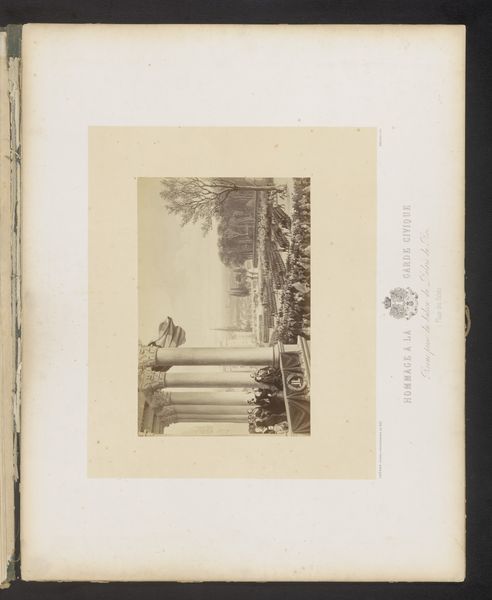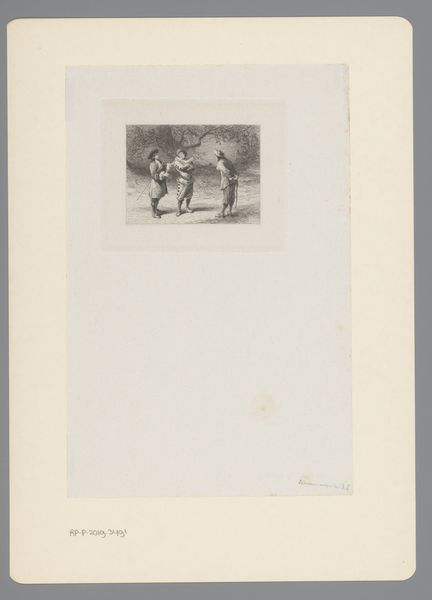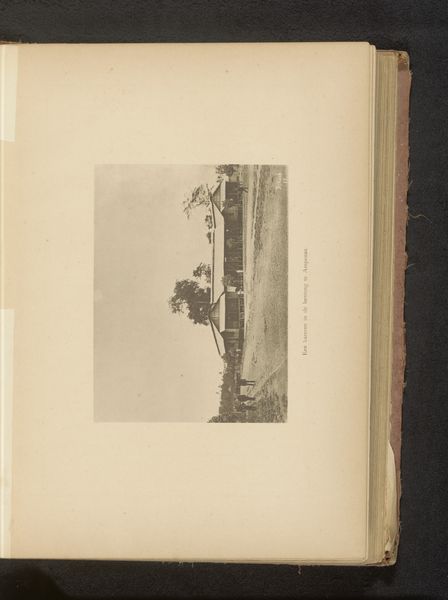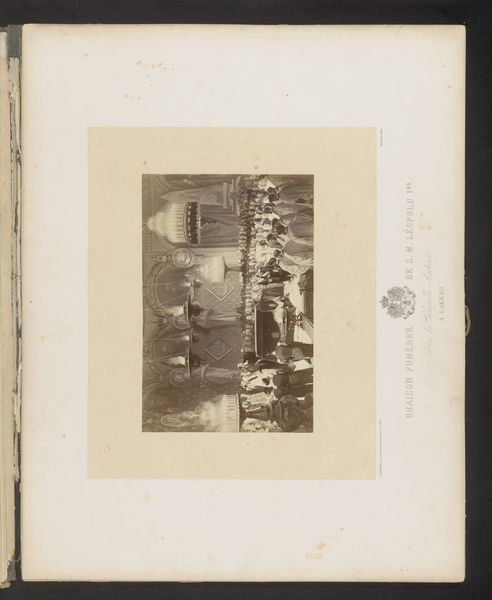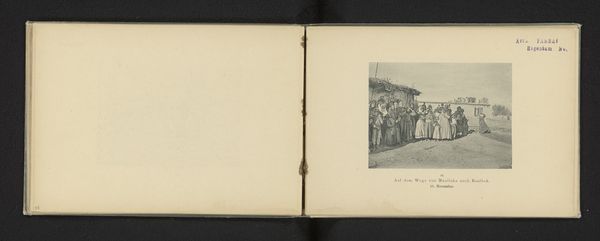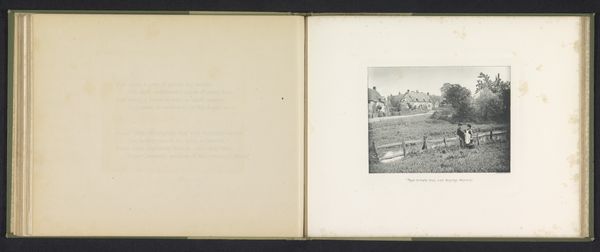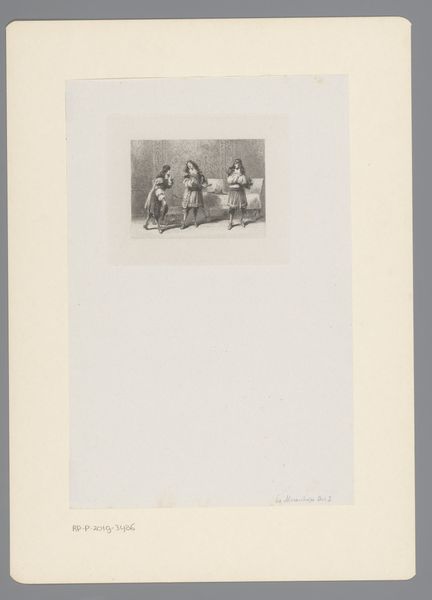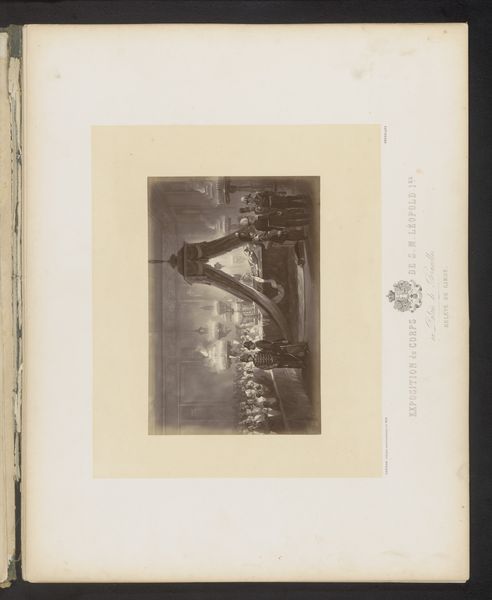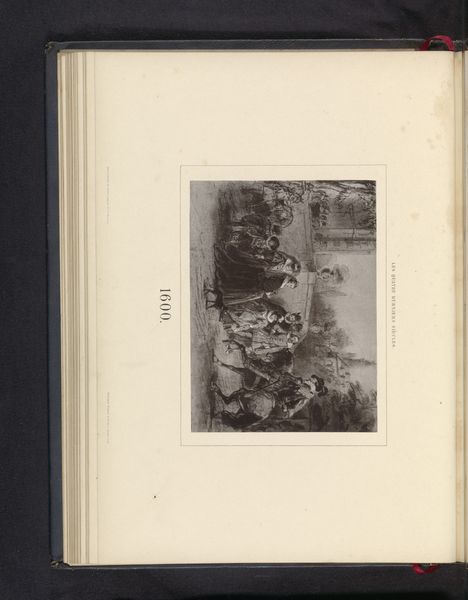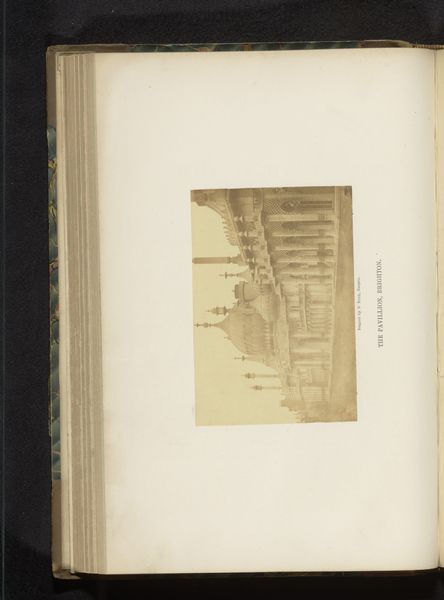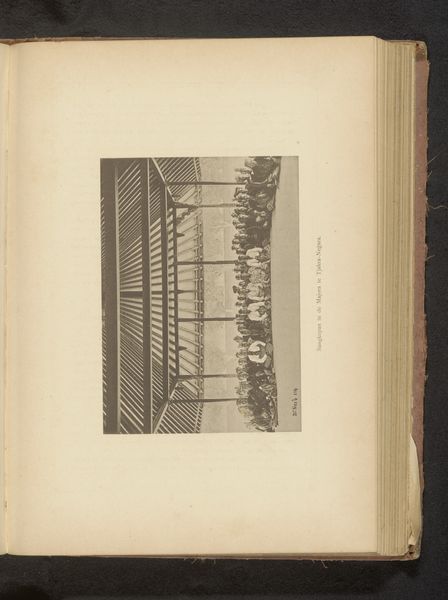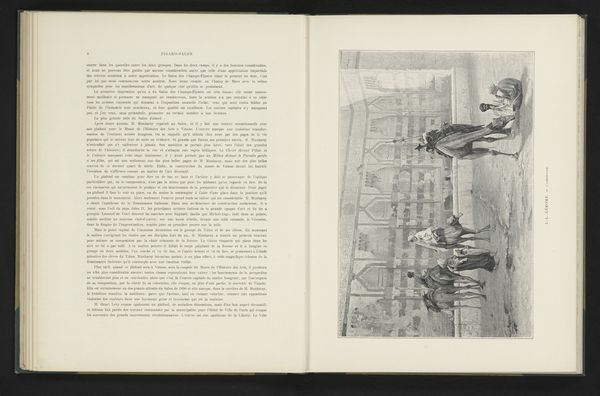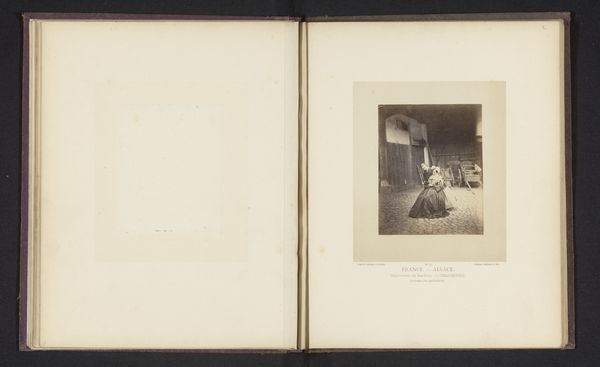
Matadors doden een stier in de stierenvechtersarena van Carretera de Aragon te Madrid c. 1880 - 1890
0:00
0:00
print, photography, gelatin-silver-print
# print
#
landscape
#
photography
#
orientalism
#
gelatin-silver-print
#
genre-painting
#
realism
Dimensions: height 92 mm, width 144 mm
Copyright: Rijks Museum: Open Domain
Curator: This gelatin-silver print captures a moment of high drama: Juan Laurent’s "Matadors doden een stier in de stierenvechtersarena van Carretera de Aragon te Madrid," taken sometime between 1880 and 1890. Editor: The image is stark. It is so unsettling, witnessing this death in what feels like such a formally posed setting, even with the blurred energy of the crowd in the stands. It’s a spectacle, brutally captured. Curator: Precisely. The brilliance here, I think, is in how Laurent uses the photographic process itself to both document and comment on the spectacle of bullfighting. Gelatin-silver prints allowed for mass reproduction. This one becomes an object of consumption itself, mirroring the blood sport’s broader commodification. Editor: A blood sport consumed by whom, and to what end? Look at the class divisions evident even in this single image, in who is close to the bullring versus in the shadowed cheap seats high above. It raises critical questions about access, privilege, and the theater of violence itself. The bull represents the conquered in this theatrical conquest. Curator: It's a lens, isn’t it? A technological one that offers immediacy. Before widespread photojournalism, photography of this sort allowed for new forms of access, though limited in access itself based on its commodity status. The silver gelatin highlights the granular details and invites us to see what supports the process, and who gets the profits of circulation. Editor: But the very act of staging this photograph changes what it captures. Laurent's photograph reinforces, rather than challenges, existing power structures. By framing the bullfight as consumable entertainment, it almost legitimizes it. Think about how such images circulate internationally, reinforcing orientalist fantasies of Spanish culture for northern European audiences. Curator: That interplay, though, becomes potent. It’s simultaneously documenting the raw physicality of labor—both human and animal—and acting as a highly constructed product sold for cultural value. Laurent leaves his stamp on the event and transforms its inherent brutal processes into consumable material, thus highlighting the exchange. Editor: Ultimately, this photograph compels us to look deeper into the political economy of spectacle. Curator: A perspective I wholeheartedly agree with, forcing us to recognize it as not merely art, but commodity.
Comments
No comments
Be the first to comment and join the conversation on the ultimate creative platform.
